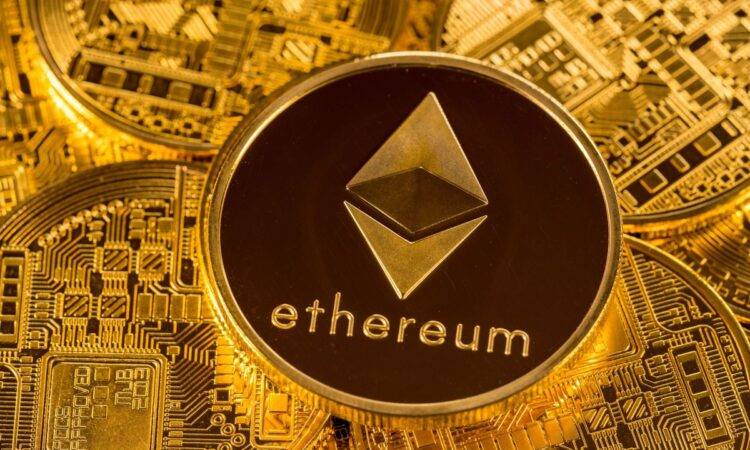A long-awaited moment in the crypto world is finally here: Ethereum, the world’s most used blockchain—and the one favoured by the lion’s share of the NFT (non-fungible token) market—today completed a software update that will drastically reduce its energy consumption.
Dubbed “the Merge”, this transition has significantly changed the security system that underpins the Ethereum blockchain, to which the world’s second largest cryptocurrency Ether, worth $200bn, is native. Its completion was confirmed today by Ethereum’s founder Vitalik Buterin on Twitter.
As a result, Ethereum’s electricity use is expected to drop overnight by a massive 99.988%, and its carbon emissions by 99.982%, according to a report published today by the research company Crypto Carbon Ratings Institute (CCRI). The report estimates that prior to the Merge, Ethereum used 23m megawatt-hours per year. Moving forward, that will be just 2,600 megawatt-hours per year.
Like most other blockchains, Ethereum’s energy use has drawn criticism and concern from crypto sceptics and evangelists alike. It was estimated earlier this year that it used as much energy per year as the Netherlands and more than either the Philippines or Pakistan.
How does this work?
Until today, Ethereum used a system known as “proof of work” to determine the validity of transactions on its blockchain. This involved network participants solving complex maths problems to validate new blocks. Because this method requires computational power from so many different servers, it expends a lot of energy.
This system has now been all but replaced with a new one called “proof of stake”, whereby transactions are validated by a group of individuals and corporations that have staked their own tokens as collateral for the security of the network. This process requires far fewer people to constantly validate blocks on the chain, and so uses far less energy.
Plans for switching to proof of stake have existed since the first days of Ethereum in 2015, and were publicised by the blockchain’s founders following widespread criticism of cryptocurrency and NFTs for their environmental burden.
What does this mean?
For those in the art world inclined towards NFTs, this shift will have a positive effect as Ethereum is the blockchain most commonly used to mint and trade NFTs, meaning that their energy footprint has been slashed. While other blockchains have been released that promised similar reductions in carbon emissions, they tended to still rely on the Ethereum network and were much less popular.
The removal of a major hurdle for some would-be NFT adopters who may have been hesitant due to the format’s carbon footprint could be a timely boon for the market, which has slumped significantly this year following the dizzying highs of 2021. Anticipation of the Merge helped boost the price of Ether, which has risen about 75% from its low point in June. In comparison, Bitcoin rose just 15% in the same period.
The move has been described…
Read More: www.theartnewspaper.com









 Bitcoin
Bitcoin  Ethereum
Ethereum  Tether
Tether  XRP
XRP  Solana
Solana  USDC
USDC  Cardano
Cardano  Dogecoin
Dogecoin  TRON
TRON  Lido Staked Ether
Lido Staked Ether  Lombard Staked BTC
Lombard Staked BTC  Pi Network
Pi Network  Wrapped Bitcoin
Wrapped Bitcoin  LEO Token
LEO Token  USDS
USDS  Stellar
Stellar  Chainlink
Chainlink  Hedera
Hedera  Wrapped stETH
Wrapped stETH  Avalanche
Avalanche  Shiba Inu
Shiba Inu  Toncoin
Toncoin  Sui
Sui  Litecoin
Litecoin  Bitcoin Cash
Bitcoin Cash  MANTRA
MANTRA  Polkadot
Polkadot  Ethena USDe
Ethena USDe  Binance Bridged USDT (BNB Smart Chain)
Binance Bridged USDT (BNB Smart Chain)  WETH
WETH  Bitget Token
Bitget Token  Hyperliquid
Hyperliquid  WhiteBIT Coin
WhiteBIT Coin  Monero
Monero  Wrapped eETH
Wrapped eETH  sUSDS
sUSDS  Uniswap
Uniswap  Dai
Dai  Aptos
Aptos  NEAR Protocol
NEAR Protocol  Pepe
Pepe  Ethereum Classic
Ethereum Classic  Ondo
Ondo  Internet Computer
Internet Computer  Gate
Gate  OKB
OKB  Coinbase Wrapped BTC
Coinbase Wrapped BTC  Aave
Aave  Mantle
Mantle